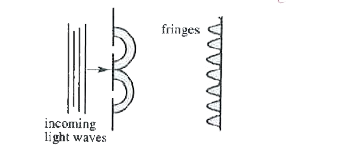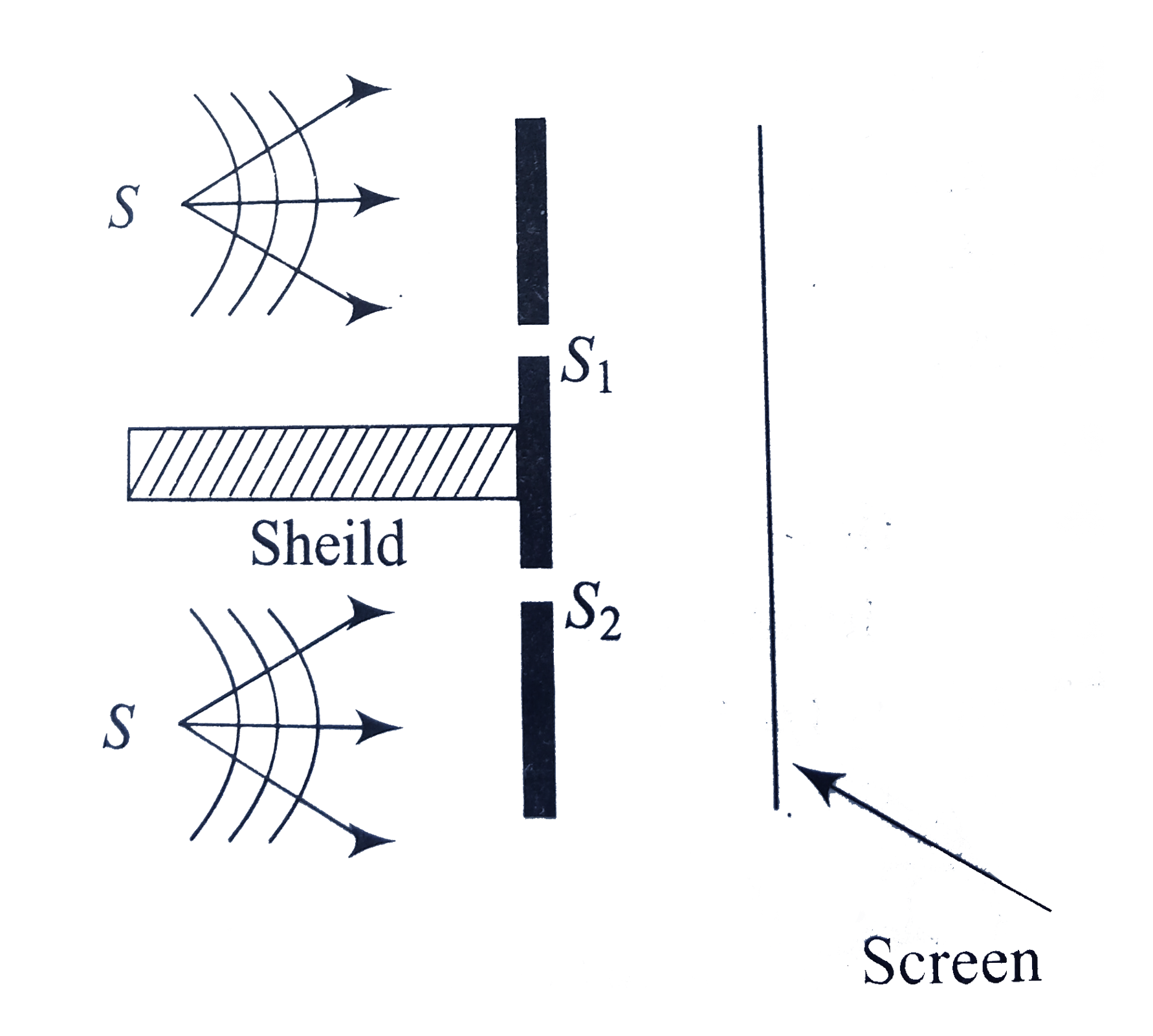Instead of using two slits as in young.s experiment, if we use two separate but identical sodium lamps, which of the following occur
a) uniform illumination is observed
b) widely separate interference
c) very bright maximum
d) very minimum.
a only
a, b only
c, d only
b, d only
The correct Answer is:A
To solve the problem, we need to analyze the situation described in the question.
1. Understanding Young's Experiment: In Young's double-slit experiment, a single coherent light source is used to illuminate two closely spaced slits. The light waves from these slits interfere with each other, creating a pattern of bright and dark fringes on a screen due to constructive and destructive interference.
2. Identical Sodium Lamps: The question states that instead of using two slits, we are using two separate but identical sodium lamps. Each lamp emits light waves, but since they are separate sources, they will not maintain a constant phase relationship with each other.
3. Phase Relationship: For interference patterns to form, the light waves must have a constant phase difference. Since the two sodium lamps are separate, the phase difference between the light waves from the two sources will vary over time. This results in a lack of coherent interference.
4. Resulting Illumination: Due to the absence of a constant phase difference, the light from the two sodium lamps will not produce distinct interference patterns. Instead, the light will combine in a way that results in uniform illumination across the area where the light is observed.
5. Conclusion: Given the options provided:
- a) Uniform illumination is observed
- b) Widely separate interference
- c) Very bright maximum
- d) Very minimum
The correct answer is (a) uniform illumination is observed.
Final Answer:
The correct option is (a) uniform illumination is observed.
- a) Uniform illumination is observed
- b) Widely separate interference
- c) Very bright maximum
- d) Very minimum
The correct option is (a) uniform illumination is observed.
Topper's Solved these Questions
- BOOK - AAKASH SERIESCHAPTER - WAVES OPTICSEXERCISE - EXERCISE -IA (MORE THAN ONE OPTION)14videos
WAVES OPTICS
- BOOK - AAKASH SERIESCHAPTER - WAVES OPTICSEXERCISE - EXERCISE -IA (MATCHING TYPE QUESTIONS)6videos
WAVES OPTICS
- BOOK - AAKASH SERIESCHAPTER - WAVES OPTICSEXERCISE - EXERCISE -IA (POLARASATION)29videos
WAVES OPTICS
- BOOK - AAKASH SERIESCHAPTER - WAVESEXERCISE - EXERCISE-III (Doppler effect :)15videos
WAVES
Similar Questions
IF Young's experiment is performed using two separate identical sources of light instead of using two slits and one light source then the
View SolutionThe two slits in Young's double slit experiment are illuminated by two different sodium lamps emitting light of the same wavelength. No interference pattern will be observed on the screen.
View SolutionIn Young's double slit experiment, if the two slits are illuminated with separate sources, no interference pattern is observed because
View SolutionAnswer the following:
(a) what are coherent sources of light ? Two slits in Young's double slit experiments are illuminated by two different sodium lamps emitting light of the same wavelength. Why is no interference pattern observed?
(b) Obtain the condition for getting dark and bright fringes in Young's experiment. Hence write the expression for the fringe width.
(c) If s is the size of the source and its distance from the plane of the two slits, what should be the criterion for the interference fringes to be seen?View SolutionA : In Young.s double slit experiment, we observe an interference pattern on the screen if both the slits are illuminated by two bulbs of same power.
R : The interference pattern is obserbed only when source are monochromatic.View SolutionIn Young's double slit experiment, if the distance between two slits is equal to the wavelength of used light. Then the maximum number of bright firnges obtained on the screen will be
View SolutionIn a Young's double slit experiment the separation between the slits is 0.10 mm, the wavelength of light used is 600 nm and the interference pattern is observed on a screen 1.0 m away. Find the separation between the successive bright fringes.
View SolutionIn a Young's double slit experiment green light is incident on the two slits. The interference pattern is observed on a screen. Which of the following changes would cause the observed fringes to be more closely spaced ?
 View Solution
View Solution_E01_055_Q01.png)
In a young's double slit experiment, green light is incident on the two slits. The interference pattern is observed on a screen. Which of the following changes would cause the observed fringes to be more closely spaced?View SolutionWhat happens to the interference pattern if the two slits in Young's experiment are illuminated by two independent sources such as two sodium lamps S and S' as shown in figure
 View Solution
View Solution

